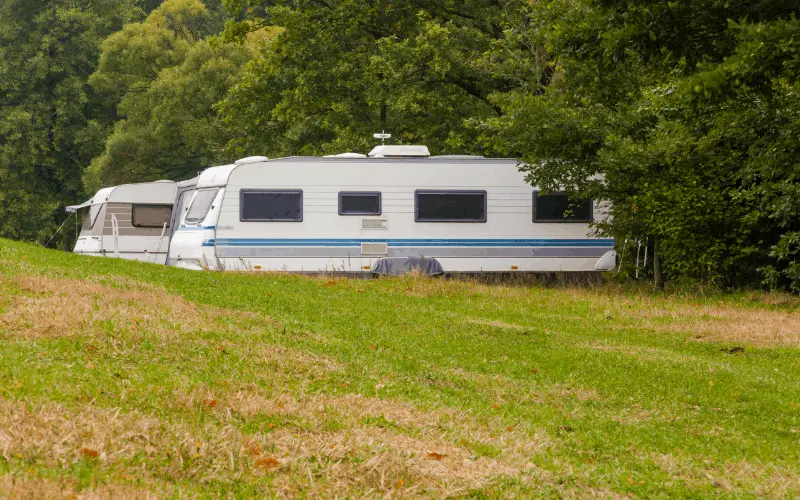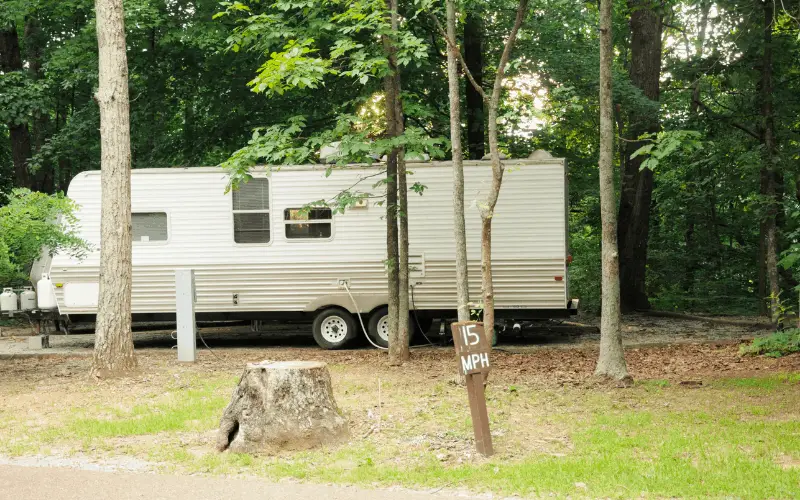Published Date: October 17, 2020
Last Updated on November 29, 2022 by Camper Front
Sticker residue, as well as a worn-out decal, can totally ruin the look of your camper, making it look older than it actually is. That is why knowing how to remove sticker residue from the camper is very important.
It’s a fairly easy process that requires minimal tools and a little bit of expertise. Here, we will be showing you the entire step-by-step process.
Let’s get started!
Table of Contents
How To Remove Sticker Residue From Camper
As stated earlier, removing the sticky residue left behind on a camper by a worn-out decal as well as the disfigured decal itself requires minimal tools.
Just follow the process below:
Heat Up The Decal
You can heat up your decal using a hairdryer, steamer, heat gun, or direct sunlight using your heating tool of choice.
You want to apply heat to one end part of the decal and use the edge of a hard plastic squeegee to gently lift up the heated-up corner of the decal and continue applying the heat as you peel off the sticker. And depending on decal size, age, and air temperature, this might be a slow process.
Your decal might peel off in very small strips, or it might peel off completely with one peel. To even fasten up this process, you can make use of a vinyl eraser rubber wheel attachment for even faster, easier removal.
You can also park your RV in a position where the areas with the sticky residue and decal are placed in direct sunlight for a couple of hours. Doing this will help to make the whole removal process a lot easier.
Apply An Adhesive Remover

If you already have a sticky residue on the RV surface or it was left by the recently removed decals, you will need to remove the glue left behind. There are several different products you can make use of for this step.
- Goof Off
- Rapid remover adhesive remover
- Goo Gone
- 3M general-purpose adhesive remover
You will also need some paper towels and gloves for this step. All you need to do is simply apply a generous amount of the cleaning product of your choice to the sticky areas.
You can do this either with a paper towel, or the product might come in a spray can which you can use to directly apply the product to the surface.
Now, allow the product to sit on the surface for a couple of minutes then, using a putty knife, scrape off the sticky residue.
Removing Oxidation
Removing oxidation from your RV exterior surface is a very tedious job, but it is usually worth it in the end. Oxidation is what causes discoloration in areas around the decals.
So you will need to remove the oxidation on the vehicle’s surface to match the color beneath the decal, which has acted as protection on that surface area from oxidation.
To remove oxidation from your RV, you will need to make use of an oxidation remover, and apply the product to a small section at a time using a small amount of the product on a clean cloth or towel.
Rub thoroughly into the surface with moderate pressure. Then wipe with another clean cloth or towel. Do not allow the product to dry on the surface.
You can also go in with a paint stripper pad to scrub the surface in order to equalize it; using moderate pressure, you want to use these pads to carefully scrub and whiten the discolored areas.
Final Step
Once you have achieved your desired brightness, you will need to wash away any residue that might have been left by the oxidation remover. You don’t want the residue to sit on the RV as it can cause it to become a chalky and white residue.
Get a suitable RV soap and give your vehicle a good wash; you can also go ahead and apply a layer of wax over the newly exposed areas to protect it from oxidation.
Conclusion
Hopefully, this article has given you a comprehensive guide on how to remove sticker residue from a camper as well as how to remove an old decal from an RV.
And as you can see, the process is pretty easy and straightforward and requires less time, effort, and tools. Do let us know if you have any questions.

